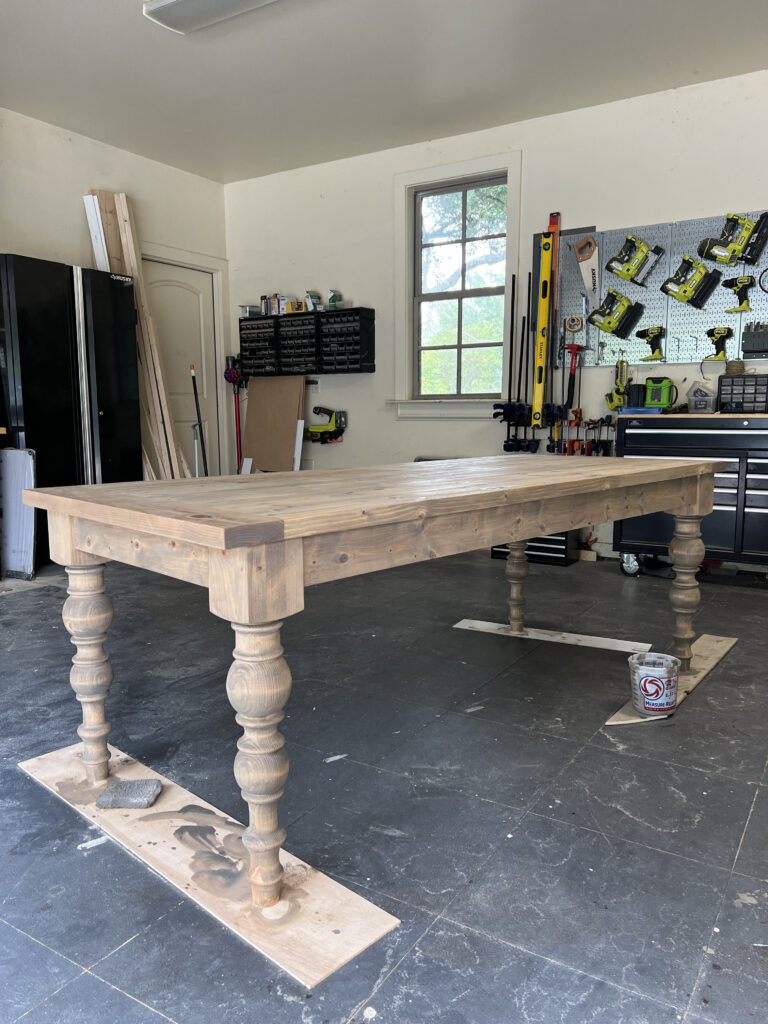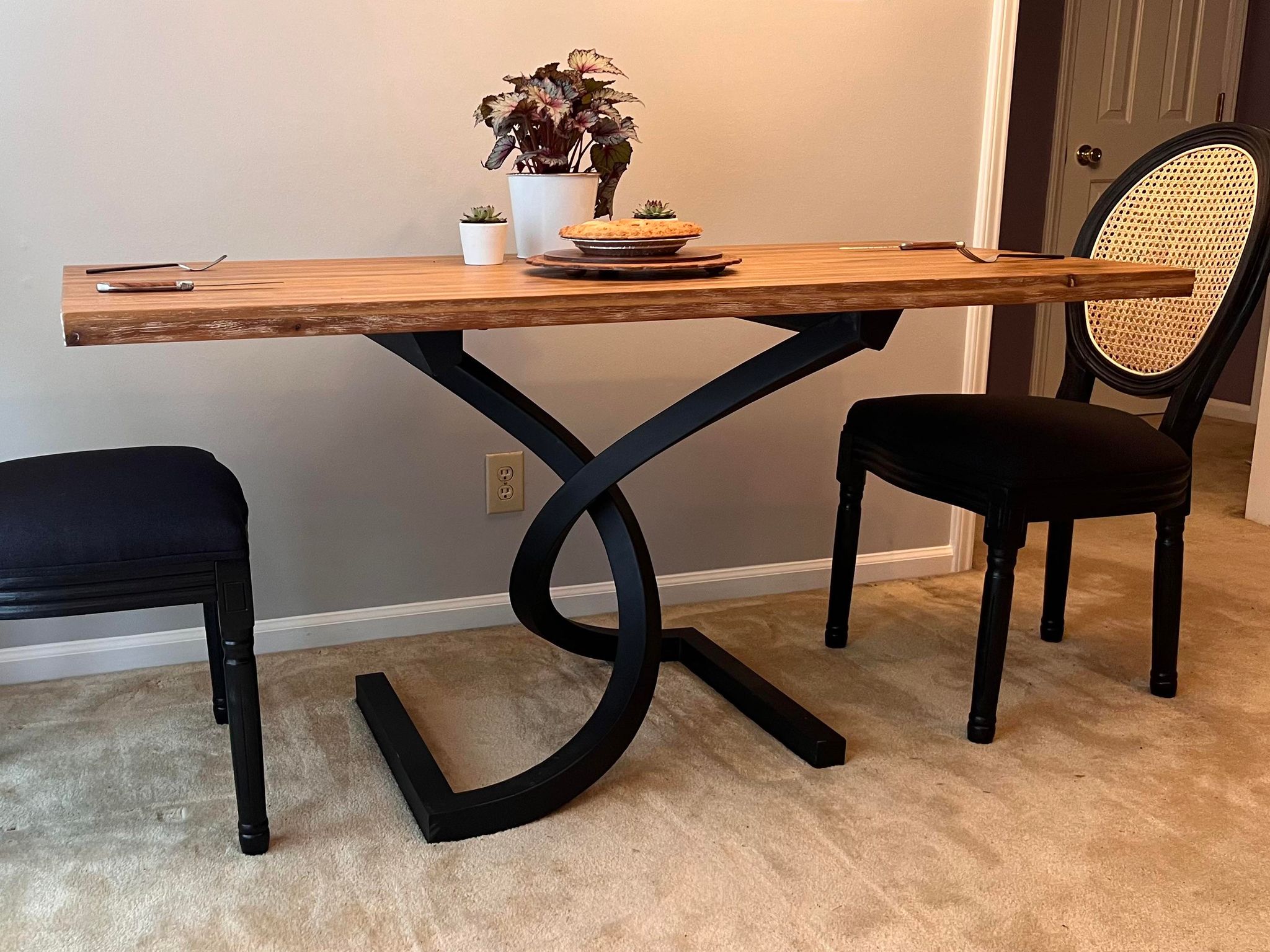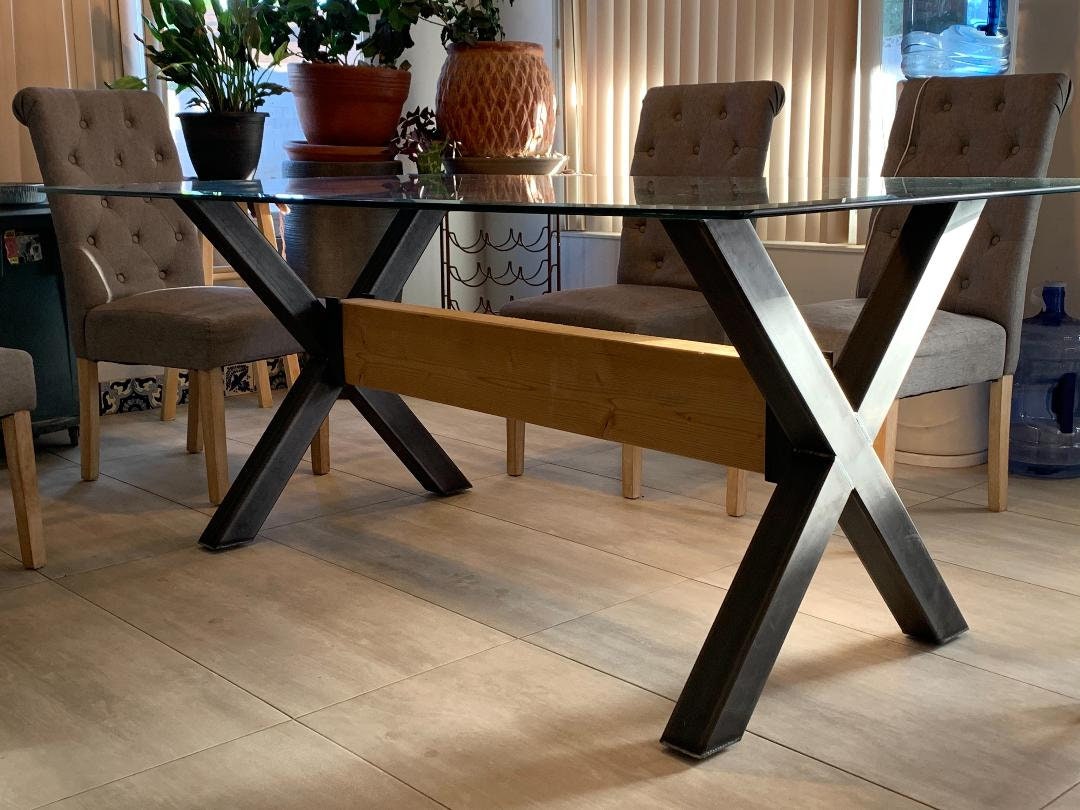Attain Modern Beauty Utilizing Streamlined Dining Table Legs Wood Styles
Checking Out the Various Kinds of Table Legs Wood for Your Dining Room
The choice of table legs wood can greatly impact both the functional and aesthetic high qualities of your eating space. Strong wood alternatives, such as oak and walnut, supply a timeless look with unparalleled longevity, while engineered wood alternatives provide ingenious styles that mimic the richness of all-natural grains. Furthermore, the expanding fad of reclaimed wood presents a sustainable component that interest ecologically mindful consumers. As we check out these different choices, it becomes vital to consider not only the visual allure but also the sensible implications of each product selection. What elements should lead your decision?
Solid Wood Options

Unlike engineered materials, solid wood is much less vulnerable to bending and damages over time when appropriately kept. Each item of strong wood is special, showcasing private features that add to the charm and personality of the eating table.
Additionally, strong timber can be finished in various methods, ranging from natural oils to stained finishes, allowing homeowners to personalize their furniture to match their style. In recap, picking strong timber for dining table legs not just makes certain architectural stability however also enhances the aesthetic charm of the dining area, making it a worthwhile financial investment for any type of home.
Engineered Wood Alternatives

Plywood, constructed from numerous layers of wood veneer, is secure and specifically strong, making it an excellent selection for dining table legs. Its split make-up enables it to withstand adjustments in humidity and temperature level much better than conventional strong wood. MDF, on the various other hand, uses a smooth surface for paint or veneering, enabling developers to achieve a sleek look while keeping structural honesty.
When picking crafted timber alternatives, it is vital to take into consideration the desired use and desired aesthetic. These materials not only improve the performance of eating areas however additionally permit for better layout adaptability, making certain that traditional and contemporary styles can exist side-by-side sympathetically.
Reclaimed Timber Includes
Redeemed timber uses a distinct blend of sustainability and personality, making it a progressively preferred selection for eating table legs. Sourced from old barns, manufacturing facilities, and other frameworks, redeemed timber symbolizes a background that new materials merely can not reproduce. Each item brings its own story, noted by unique flaws, knots, and varying grain patterns, which add to a table's unique visual allure.
In enhancement to its visual charm, redeemed timber is an eco-friendly choice. By repurposing formerly utilized materials, it reduces the need for new lumber, thus aiding to decrease and save woodlands waste. This about his straightens with a growing customer preference for lasting methods in furnishings.
Additionally, redeemed wood is often much more long lasting than newly gathered timber as a result of its age. The natural drying process that recovered wood undertakes cause a denser and more powerful material, making it much less vulnerable to bending and splitting. This improves the long life of dining tables, permitting them to endure the roughness of daily usage.
Softwood vs. Hardwood
When choosing table legs, comprehending the differences between softwood and wood is important for achieving both published here functional and visual objectives. Softwoods, obtained from coniferous trees, such as want and cedar, are characterized by their lighter weight and simplicity of adjustment. They usually show a more rustic appearance, making them ideal for casual or country-style eating spaces. Softwoods are normally less resilient than woods, which can be a factor to consider for family members or those looking for durability in their furnishings.
On the other hand, hardwoods, sourced from deciduous trees like cherry, maple, and oak, are renowned for their thickness, toughness, and resilience. The elaborate grain patterns and rich shades of hardwoods provide a timeless and innovative allure, making them suitable for official dining settings. While woods often tend to be extra pricey and heavier, their strength versus wear and tear commonly validates the financial investment.
Inevitably, the option in between softwood and wood for eating table legs must line up with your style vision, usage demands, and spending plan, making sure that your dining space mirrors your individual style while continuing to be useful gradually.

Coatings and Therapies
The visual allure and long life of table legs can be substantially boosted with different surfaces and treatments. These processes not just shield the timber from damage but also elevate its look, permitting it to match diverse interior designs.
One usual therapy is discoloring, which permeates the wood and enhances its all-natural grain while adding shade. Discolorations provide an abundant, elegant appearance, enabling homeowners to match their furniture with existing style. Conversely, clear coatings such as polyurethane or varnish produce a protective layer without modifying the timber's original tone, making certain longevity versus wear and tear.
In addition, all-natural oils, like tung or linseed oil, nourish the timber and provide a refined shine, all while being environment-friendly. These oils allow the surface area to breathe, avoiding dampness accumulation and potential bending.
For those seeking a rustic appeal, distressed or weather-beaten finishes can be put on create an aged look, including character to the item. Ultimately, the option of finishes and therapies depends on personal choice, desired visual appeals, and the details wood kind, making it necessary to think about these factors when picking eating table legs for your area.
Verdict
Strong timbers, crafted choices, and redeemed alternatives each deal distinctive benefits, providing to numerous preferences and demands. Ultimately, the option of timber kind ought to straighten with desired design, longevity, and ecological factors to consider, boosting get more the total dining experience.
The choice of dining table legs wood can profoundly impact both the visual and useful qualities of your eating room - Dining Table Legs Wood. Strong wood choices, such as oak and walnut, offer a classic look with unmatched resilience, while engineered timber options use ingenious designs that resemble the splendor of all-natural grains. Strong timber uses an ageless quality that can boost the total layout of a dining space. Each item of solid wood is one-of-a-kind, showcasing private qualities that add to the appeal and personality of the dining table
Additionally, reclaimed wood is often extra long lasting than recently collected wood due to its age.